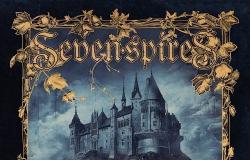This article is published in issue 24-25 of Vanity Fair on newsstands until June 18, 2024.
For the unwary Lombard who arrives in Rome for the first time, the trap is always the same: the light, the enormous spaces, the ruins, the vegetation that made Goethe and many others before and after him fall in love. At that point he is already screwed, Rome has already taken possession of him even if the daily scenario offered to him will be much more often that of Rome, Federico Fellini’s 1972 film in which a central section is a colossal traffic jam, rather than the placid admiration of Roman ruins. «Rome is a city that has died and been reborn so many times, where no one cares whether you too are alive or dead. What better place to wait to see if everything ends or not?”, says the great writer Gore Vidal as himself in Rome by Fellini, a phrase that I added to the novel. Vidal had arrived in that fateful period called “Hollywood on the Tiber”, when blockbusters were born with protagonists like Liz Taylor, when people spoke American in Via Veneto, when people wanted to forget the post-war period by driving American custom-built cars. In short, the Dolce Vita.
Elizabeth Taylor with the actor Mike Nicholson, in front of the Pipistrello club in via Veneto, in Rome, in 1962
Umberto Cicconi/Getty Images
Dolce Vita also and above all populated by many «sòla». A word that can be translated into Milanese as “bin”, Rome is the Silicon Valley of “sòla”, of scoundrels, of lovable people who don’t understand what work they do, perhaps none. Of people trying to screw you, without great strategies in mind, but it’s better than working. In this indolent city our protagonist, the young and clumsy journalist Federico, finds himself from one day to the next, sent by his very Milanese magazine (one of the independent ones that are there one day and the other not) to interview a director who has become famous, the arrogant and snooty Mario Maresca who even won an Oscar with his film Latrine America. But in his long journey Federico comes across a series of sensational “sòle”, unlikely characters who populate Roman terraces and restaurants. Among politicians, presenters, real or presumed film producers, he arrives in the attic of a very rude undersecretary, then ends up in Sabaudia in a famous fish restaurant, then again goes to look for the famous director near Piazza Vittorio under his house. However, in Piazza Vittorio he runs into Barry Volpicelli, a gentleman who doesn’t really know what he does. He was a journalist, has an estate by the sea, travels around Rome in an old Rolls with California license plates. He’s a big socialite. Perhaps he is the most “lonely” of all. He is certainly charming, and Federico becomes attached to him like a pied piper, so much so that he follows him on a wild adventure.
Piazza Vittorio is in the center of the Esquilino district, where “the high end of the starving population” lives, especially writers and screenwriters, who instead, in order to try to make the leap, sometimes board the metro line A, the same one that ours takes. Federico, who descends into the bowels of the earth, among never-renovated carriages from the 1950s and dark tunnels (again, Rome of Fellini) and emerges “in” Prati, the neighborhood not only of Rai but of all the production companies. Producers are always peculiar types, just think of Hollywood and the Selznick and Mayer sagas, crafty people who settled on the West Coast not only for the light but also because Puritan morality was far away. The specter of “sòla” looms over Roman producers.
At the beginning of June, directors and producers begin the transhumance towards Capalbio, where they lay their eggs. Rita Becchetti, Barry’s first wife, is also a producer based in Capalbio. Already the very rich daughter of real estate developers, she arrived at the cinema after a series of entrepreneurial failures (but she is, in fact, very rich). Capalbio has changed a lot over the years. The lazy journalists who, like our Federico, perhaps know nothing about it and are invited at once to do the “usual” reportage, describe the most famous beach, the Ultima Spiaggia, as a compound of communists, but that is the background, a sort of moodboard that flows through the faded photos with Napolitano, Umberto Eco, Occhetto (his kiss among the olive trees with his wife caused embarrassment and a renewed inspiration for the tourist resort). The only ones who have remained faithful over the centuries are the Rutelli, who have defied time and are still seen, more cheerful than ever, among these waves. But the most popular is Carmen Bay, frequented by Calenda and more ye ye groups, and for a few years the La Mandria club, for members only, has been very popular. The rich and very rich without homes rent the villas of the Sacra, the large estate of the Puri Negri, with infinity pools and transfers (like our Rita) in golf carts to the beach (which is also a gay beach, so it can it may happen that during some very fancy lunch the guests are distracted by less than judicious pairings).






